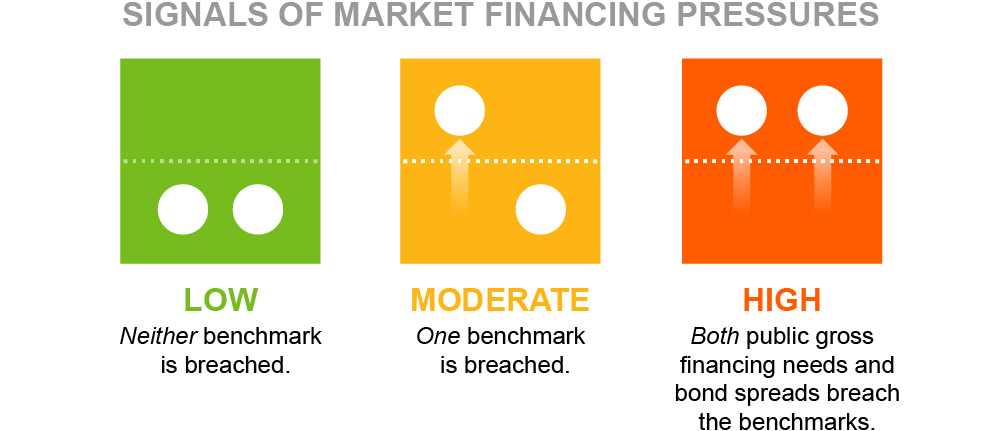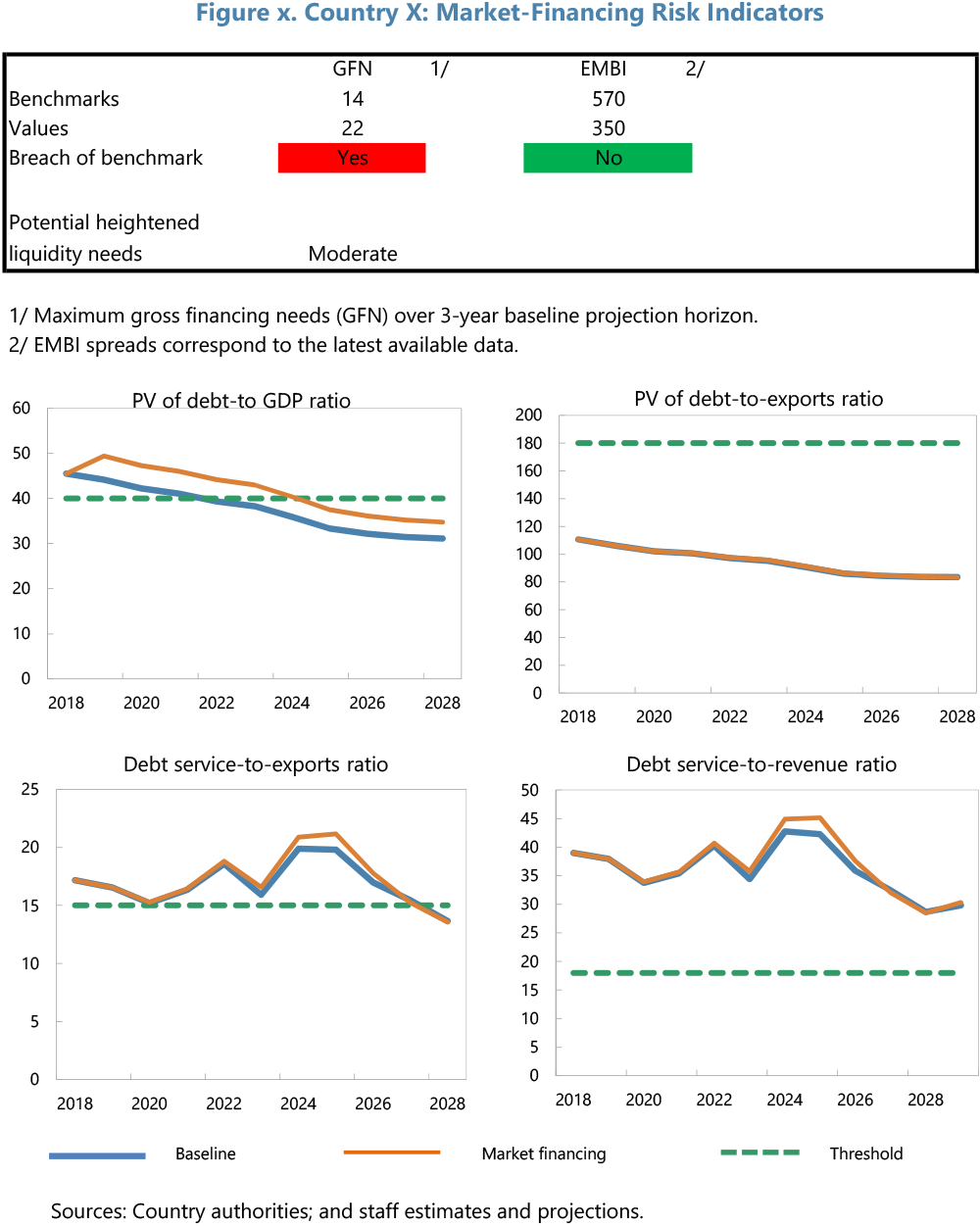
Market Financing
In Station 7 you will be introduced to an additional tool to assess the risks posed by shifts in market sentiments: the Market Financing Tool. It is important to assess shifts in market financing conditions because, when significant, risks associated with these shifts can affect both the external and overall risk of public debt distress.
The evolving financing landscape and the challenges emerging from a weaker environment have reshaped the nature of risks facing LICs. One source of financing that has increased in importance, particularly for “frontier” LICs that attract foreign portfolio investors, is borrowing from international bond markets. As a result, LICs are increasingly exposed to a wider set of vulnerabilities, including market volatility.
Signals from the Market Financing Tool
This tool is applicable to countries with market access, which is defined by the same eligibility criteria used for the market financing stress test discussed in Station 5.2. A country is defined as having market access when it has outstanding Eurobonds and/or the capacity to access international financial markets on a durable and substantial basis.
The Market Financing tool produces an additional signal regarding the extent of market-financing pressures, on top of the market financing tailored stress test, to fully capture the extent of liquidity risks faced by countries with market access under the baseline scenario.
The market financing pressures signal does not directly inform the mechanical risk rating but informs judgement. This will be discussed in Station 8.
This new tool will assess whether estimated gross public financing needs (as a share of GDP) and prevailing Emerging Market Bond Index (EMBI) spreads point to risks of experiencing debt distress.
EMBI
The Emerging Markets Bond Index (EMBI) is JP Morgan’s index of dollar-denominated bonds issued for a selection of countries, with the information available from financial data sources such as Bloomberg.

Market-financing vulnerabilities would be deemed significant if there were consistent early warning signals across the two indicators.
A breach of both benchmarks (GFNs above14 percent of GDP and EMBI spreads higher than 570 bps) would signal heightened liquidity needs at times of adverse external market conditions, thereby increasing rollover risks and the likely need to seek exceptional financing.
Market-Financing Risks
The GFN-EMBI spread pair of (14, 570) yields the best combination of Type I and Type II errors. Under these two benchmarks, the Type I error and Type II error rates are 18 percent and 48 percent, respectively. This is within a reasonable range of the statistics obtained for the external debt thresholds. The selected pair is also comparable to the high-risk benchmarks currently used in the MAC-DSA.
The GFN and EMBI spread indicators add information not captured by the other external debt burden indicators for the sample of frontier LICs and EMs. Including the GFN and EMBI spread in the multivariate signal approach exercise to predict debt distress (taking the external debt thresholds as previously estimated) significantly improves the loss function and the rate of Type I error. Table AV.1 illustrates the results for the sample of frontier LICs and EMs used to derive the GFN-EMBI spread benchmarks. The results confirm that for countries that have market access, the GFN and EMBI contain additional information for flagging potential debt distress.

If you would like to find more information check out the DSF Policy Paper
If bond spreads are not available, a breach in the GFN threshold may be treated as an early warning sign for potential market financing pressures.
The "Output 5-2 Market module" sheet displays the results of the market financing tool, also shown in Station 6 as it is a key output for any country that has substantial access to market financing.
Panel charts with the external debt burden indicators from the market-financing tailored stress and baseline scenarios complement the analysis.
In the template, this table is in the “Output 5-2” sheet.

 Takeaways for Station 7
Takeaways for Station 7
- Signals from the market financing tool are applied to the final risk rating through judgement.














